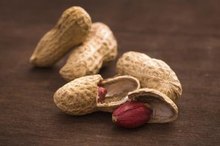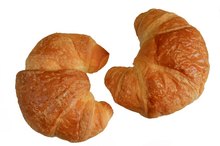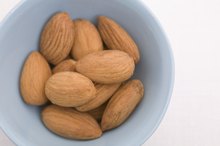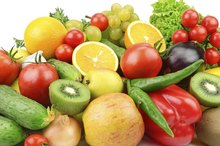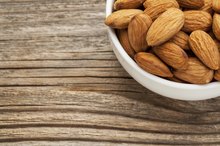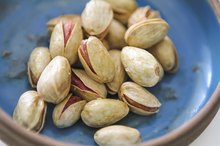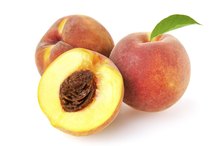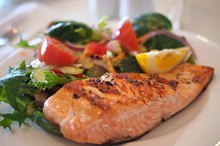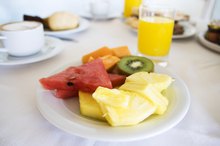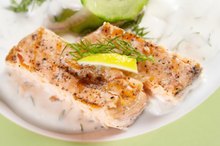Low-Carb, No-Meat Diet
Low-carb dieting doesn't have to be endless plates of bacon and huge T-bone steaks. You can easily follow a low-carb plan without visiting a steakhouse or meat aisle. If you eat fish, a low-carb diet should be a breeze. Focus on wild-caught salmon and other fish, and incorporate plenty of protein, fiber and good fats. If you're strictly vegetarian, you'll find a low-carb diet more challenging, but certainly possible.
Protein at Every Meal
A 2009 study in the journal "Current Opinion in Endocrinology, Diabetes, and Obesity" concluded that increased protein coupled with reduced carbs and saturated fat can help you lose more weight. If you don't eat meat, you should incorporate protein into every low-carb meal.
Choose low-carb, protein-rich dairy foods like plain, unsweetened yogurt and cheese. For example, mix cottage cheese with walnuts and flaxseed for a healthy breakfast packed with protein, fiber and omega-3 fatty acids. Eggs make a healthy meatless, low-carb meal. Fill an omelet with goat cheese and vegetables, or poach eggs with spinach and serve with a walnut-infused salad. Whey powder also provides an quality source of protein. Blend with natural peanut butter, berries and coconut milk for a quick, delicious low-carb meal or snack.
Vegetables
Are Raw Peanuts Good for You?
Learn More
Vegetables pack numerous nutrients and fiber for few calories or carbohydrates. Find ways to incorporate protein and added fiber into green vegetables. For example, saute spinach with garlic, and top with egg slices and Parmesan cheese. Or, steam broccoli with almond slivers and drizzle melted cheddar on top.
Meatier vegetables make smart meal options. Portobello mushrooms topped with olive oil and mozzarella, for example, makes a fast, tasty lunch. Or try eggplant Parmesan encrusted with almond flour. Try spaghetti squash topped with homemade tomato sauce as a low-carb pasta alternative.
Even starchier vegetables fit into a meatless, low-carb diet. A vitamin-rich medium baked sweet potato, for example, provides 4g of fiber and 20g net carbs. You calculate net carbs by subtracting grams of fiber from the total grams of carbs.
Fruits
Berries make a nutrient-dense, low-carb food whether you blend them into yogurt or a protein shake. A 2009 study at the University of Michigan showed rats who ate blueberries had less abdominal fat, lower triglycerides and improved insulin sensitivity.
Berries also make an excellent dessert. Blend frozen cherries into plain yogurt, for example, for a far healthier alternative to cherry ice cream. Avocado provides another smart low-carb choice. A cup contains 7g of fiber, 2g of protein and rich amounts of monounsaturated fat, all for 2g net carbs. Choose low- and medium-glycemic fruits like apples, grapefruit, and pears. For weight loss, limit or eliminate higher-sugar and starchy fruits like grapes and bananas.
Nuts and Seeds
Foods to Avoid on a High Fiber Diet
Learn More
Although high in calories, you can incorporate more nuts and seeds into a vegetarian low-carb diet because you aren't getting those calories from meat. Almonds make a handy snack or a light meal if you're stuck in a plane or on the road without low-carb meatless options. A 1/4 cup of almonds contains 4g of fiber, almost 8g of protein and 12g of monounsaturated fat, all for just 2g net carbs.
If you avoid fish, you can still get omega-3 benefits with walnuts and flaxseed. They offer 95 and 146 percent respectively of your Daily Value, or DV, of these beneficial fatty acids. Remember to avoid the stale nuts stored in bins, choose raw or roasted, and limit cashews because they're higher in carbs.
Related Articles
References
Writer Bio
Jason Boehm has been writing about food and nutrition since 2000. He has written for publications like "New York Spirit" and "The Brooklyn Paper." Boehm is a Board Certified Nutrition Specialist with a Master of Science in human nutrition from the University of Bridgeport and a Master of Mass Communication from the University of Georgia.
